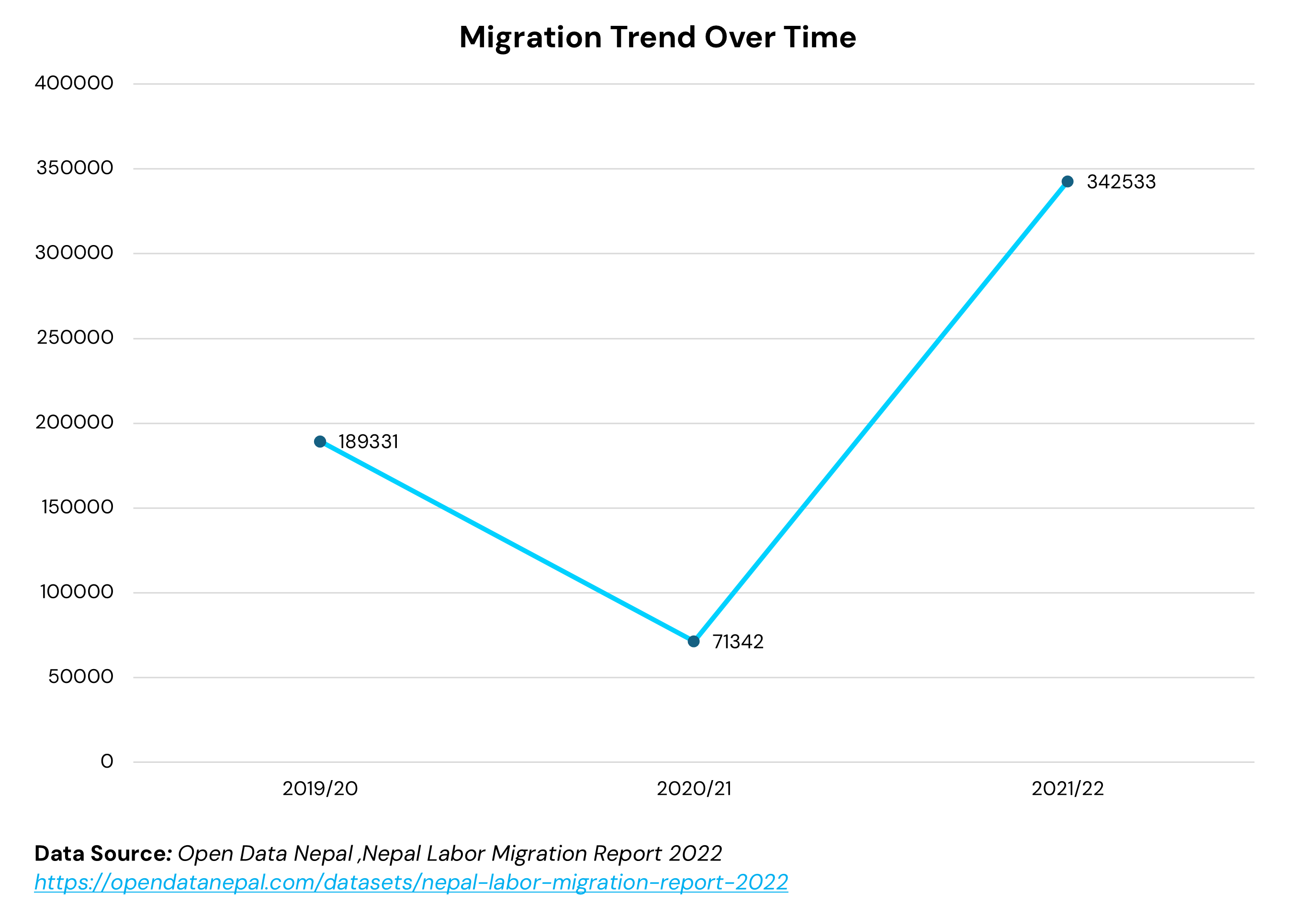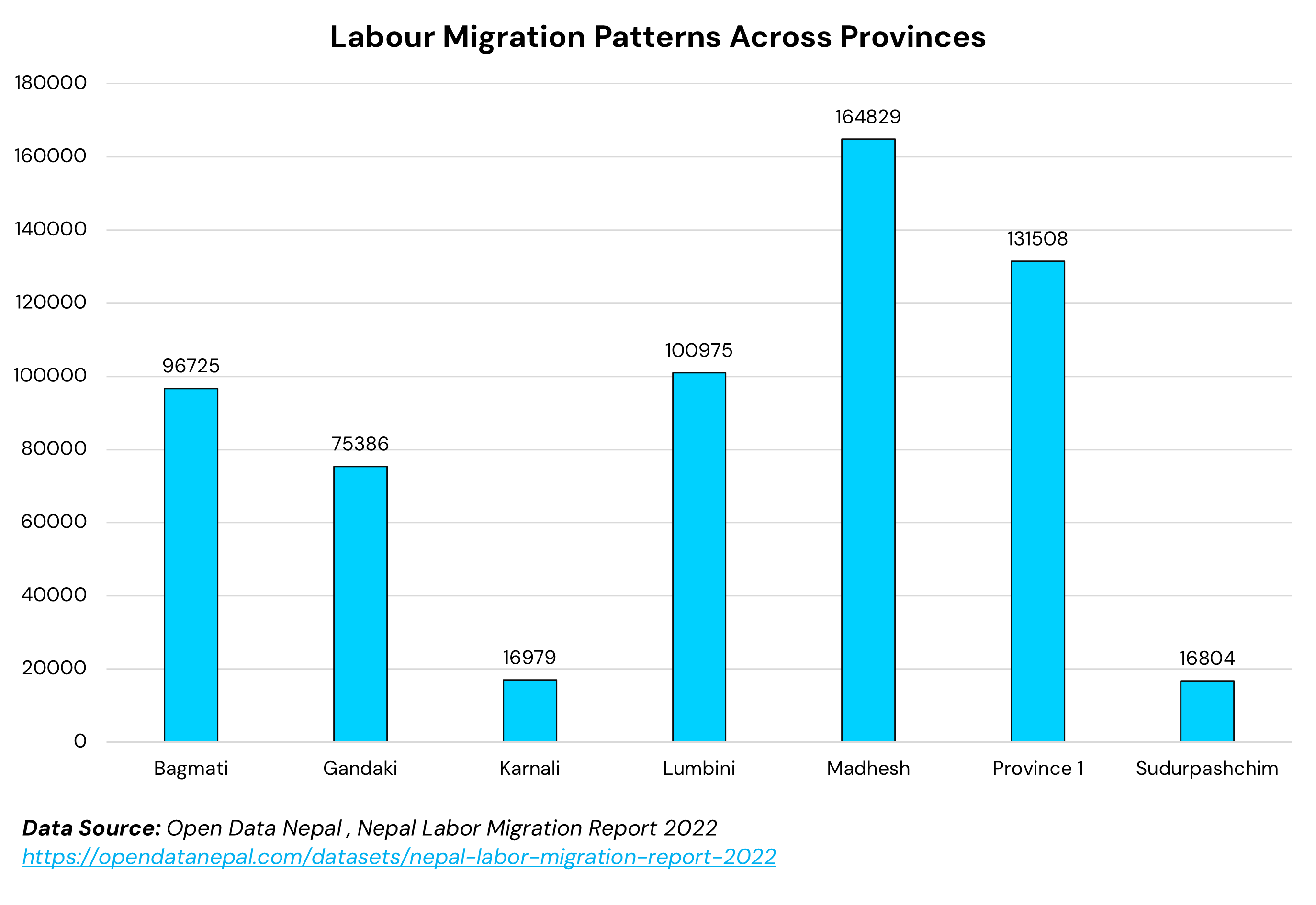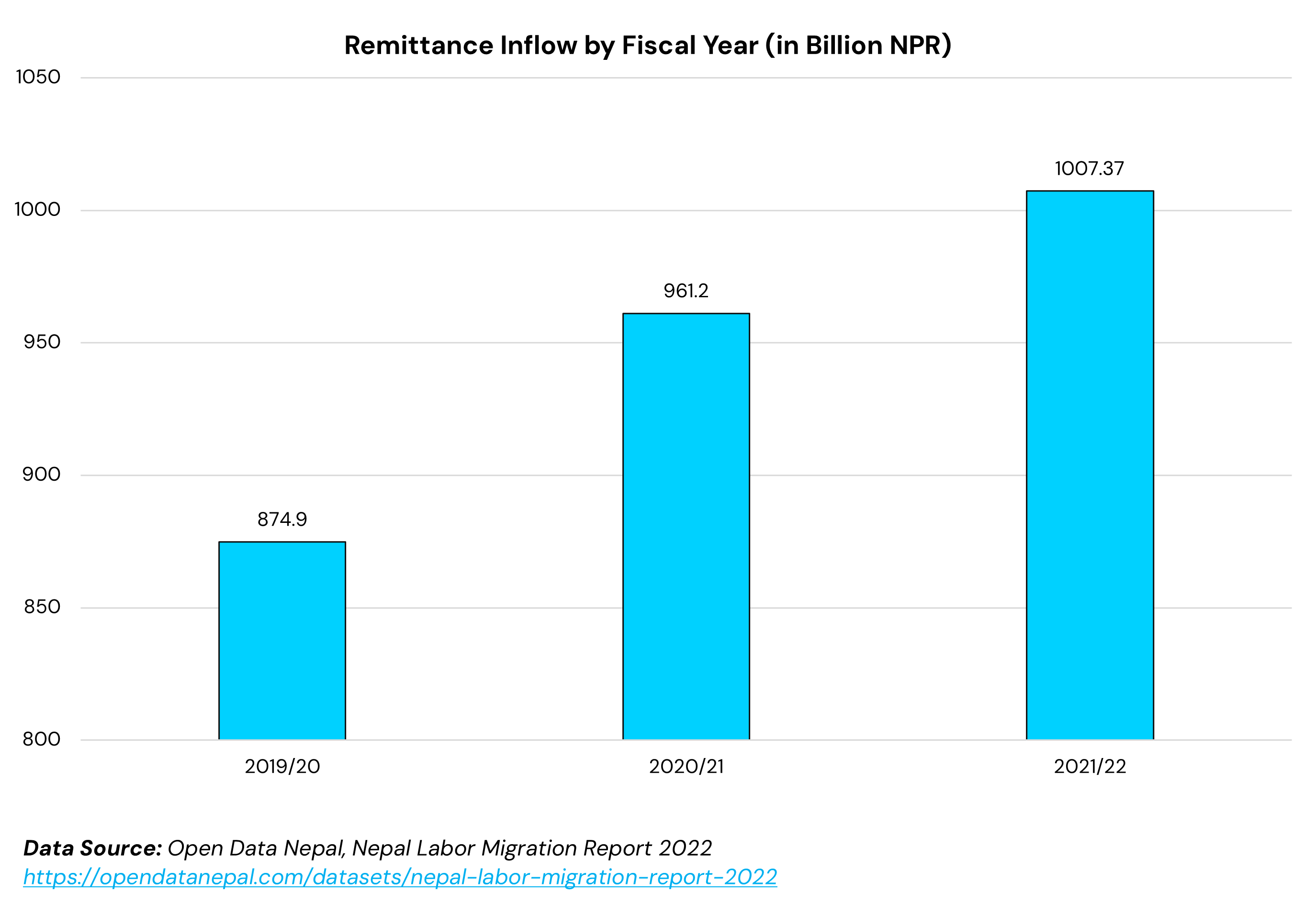Labour migration has become one of the defining forces shaping Nepal’s society and economy. What began as a gradual outflow decades ago surged in the 1990s, when Nepal opened up migration policies and labour shortages emerged in Gulf countries like Qatar, Saudi Arabia, and the UAE. The internal conflict of 1996–2006 pushed even more young Nepalis to look for opportunities abroad. Labour migration is one of the most defining features of Nepal’s economy and society.
Today, labour migration is deeply woven into the daily life of Nepal. Between 2019/20 and 2021/22 alone, Nepalis migrated to 150 different countries for work. We will explore the Nepal Labour Migration Report 2022 through this data story to find out how migration patterns, gender participation, and remittances have changed over time, especially before and after the COVID-19 Pandemic.
How Labour Migration Has Changed Over the Years

Migration approvals have risen overall in the last decade, with over 4.7 million new approvals issued between 2008/09 and 2021/22. As the chart shows, the sharpest drop came during the COVID-19 pandemic. In 2020/21, international travel nearly stopped, factories shut down, and only a small number of Nepalis migrated abroad. But as soon as borders reopened and labour demand picked up, migration rebounded strongly, reaching one of the highest levels again in 2021/22. A similar slowdown occurred when the “Free Visa, Free Ticket” policy was introduced in 2014/15, temporarily disrupting recruitment channels. The policy aimed to reduce recruitment costs for workers, but in the short term, it also caused temporary disruptions in migration as new regulations took effect.
Which Provinces Send the Most Migrant Workers
Migration is not evenly distributed across Nepal. Madhesh and Province 1 (Koshi) consistently send the highest number of workers abroad, followed by Lumbini. These regions, especially the Terai belt, have limited job opportunities within Nepal, leading many people to seek employment abroad.
In contrast, provinces like Karnali and Sudurpashchim had the lowest numbers possibly due to limited access to recruitment networks or migration agencies, or higher costs of reaching major migration hubs.

Gender Dynamics on Labour Migration
Migration is still dominated by men. Over the past decade, women made up less than 6% of total new labour approvals. Only recently has the figure reached around 10%. However, restrictive government policies and temporary bans on domestic work migration have often limited women’s mobility.

While the Gulf countries remain the primary destination for both men and women, new patterns are emerging. Countries like Cyprus, Jordan, Turkey, Romania, and Croatia have seen rising numbers of women workers, especially in domestic and care jobs. This shift highlights both growing demand abroad and limited employment options for women within Nepal. Still, the highest migrant women migrant workers are UAE, as of data from 2022.
Challenges and Risks Faced by Migrant Workers
Behind the economic benefits of migration is a much more difficult reality. Many Nepali workers, especially those in the Gulf and Malaysia, face harsh working conditions. Mostly, the vulnerability of Nepali migrant workers is due to poor working and living conditions, lack of access to social protection, including medical/ health services, language and cultural barriers, and forced overtime labour. The high incidence of deaths of Nepali migrant workers is very high. The data is alarming.
Low-skilled workers are often placed in “3D jobs”, dirty, dangerous, and demeaning, which come with high physical risk and even death.
Rising Deaths Among Nepali Migrant Workers

Since the GCC countries and Malaysia host the largest number of Nepali workers, they account for a large proportion of Nepali migrant workers' deaths. More than 100 deaths have been reported annually in Malaysia, Saudi Arabia, Qatar, and the UAE in 2019/20–2021/22. Among the GCC countries, Saudi Arabia is at the top of the list, while the UAE and Qatar follow.

A significant number of deaths have been categorized as resulting from “natural causes” without further explanation. Since 2008/09, more than 2,077 deaths, accounting for 19.5 percent of the total, have been reported as natural deaths.
Furthermore, overwork, extended working hours, and extreme heat have been associated with heart diseases and strokes, while traffic accidents remain another frequent cause of death among Nepali migrant workers
How Remittances Support Nepal’s Economy
Despite the risks, remittances are the only source of income for many Nepali families and support their basic livelihood and well-being. Remittances provide a crucial cushion to the Nepali economy. It plays a vital role in stabilizing and supporting it from a broader perspective. At the national level, they act as a stabilizing force, sometimes preventing a deeper economic crisis. Remittances contribute 24–30% of Nepal’s GDP, placing Nepal among the top remittance-receiving countries globally.

During the COVID-19 lockdowns, the remittance inflow initially but quickly recovered. During COVID-19, many expected remittances to fall, but surprisingly, they increased. This was mainly because migrants began using formal banking channels, as informal systems (like hundi) were disrupted by travel restrictions and factories in Gulf countries reopened quickly, allowing workers to resume jobs sooner.

Countries like the UAE, Saudi Arabia, Kuwait, Bahrain, India, Malaysia, the USA, and Japan now make up the biggest share of Nepal’s remittance inflows.
Conclusion
Labour migration is both a lifeline and a struggle. It provides jobs that Nepal’s economy cannot yet create, fuels national growth through remittances, and supports millions of families. At the same time, it exposes workers, especially low-skilled migrants and women, to significant risks.
The challenge for Nepal moving forward is clear: to make migration safer, more informed, and more dignified, while building enough opportunities at home so that leaving the country becomes a choice, not a necessity.
As the data tells, the story of labour migration is one of resilience, opportunity, vulnerability, and profound national dependence. Understanding these patterns is the first step toward improving the system for the next generation of Nepali workers.
About this analysis
This analysis draws from data sourced by the Ministry of Labour, Employment and Social Security and aggregated datasets from Open Data Nepal (ODN). The primary source of information is taken from Nepal Labour Migration Report 2022 published by the Ministry of Labour, Employment and Social Security.

